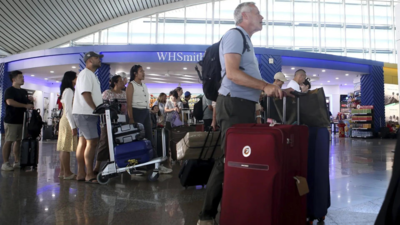
Multiple international airlines suspended their services to and from Bali on Wednesday following continuous ash clouds from Mount Lewotobi Laki-Laki on Flores, reached heights of 10 km and displaced numerous residents.
Safety concerns regarding volcanic ash prompted Jetstar and Qantas to suspend their Bali operations on Wednesday, whilst Flightradar24 indicated that AirAsia and Virgin also halted their flights to the island.
Singapore Airlines confirmed the cancellation of their Wednesday service from Bali to Singapore due to the volcanic activity.
Operations at Lombok airport in West Nusa Tenggara province, another favoured tourist location, were completely suspended, according to an airport official’s statement to Indonesia’s Antara news agency.
The flight cancellations led to difficulties for tourists who were stuck at the airport. Charlie Austin, from Perth, Australia, who was visiting Bali with his family, voiced his frustration and said, “The airline did not provide accommodation, leaving us stranded at this airport.”
Issabella Butler, another visitor from Australia, decided to search for alternative carriers for her return journey. “The important thing is that we have to be able to get out of here,” she said.
According to AP sources, the disruption stranded thousands of travellers at airports across Indonesia and Australia, though precise figures were not available.
The initial eruption of Mount Lewotobi Laki-laki occurred on November 3 in East Nusa Tenggara province, approximately 800 km from Bali, claiming nine lives. Subsequent eruptions have continued, with multiple occurrences on Tuesday.
Between November 4 and November 12, Ahmad Syaugi Shahab, general manager of Bali’s Ngurah Rai airport, reported 80 flight cancellations, affecting routes from Singapore, Hong Kong, and various Australian cities.
Indonesia’s location on the Pacific “Ring of Fire” encompasses nearly 130 active volcanoes, situated in an area of significant seismic activity across multiple tectonic plates.
The Mount Lewotobi eruption has produced an ash column reaching 10 km in height, with authorities reporting sand deposits across surrounding regions.



















